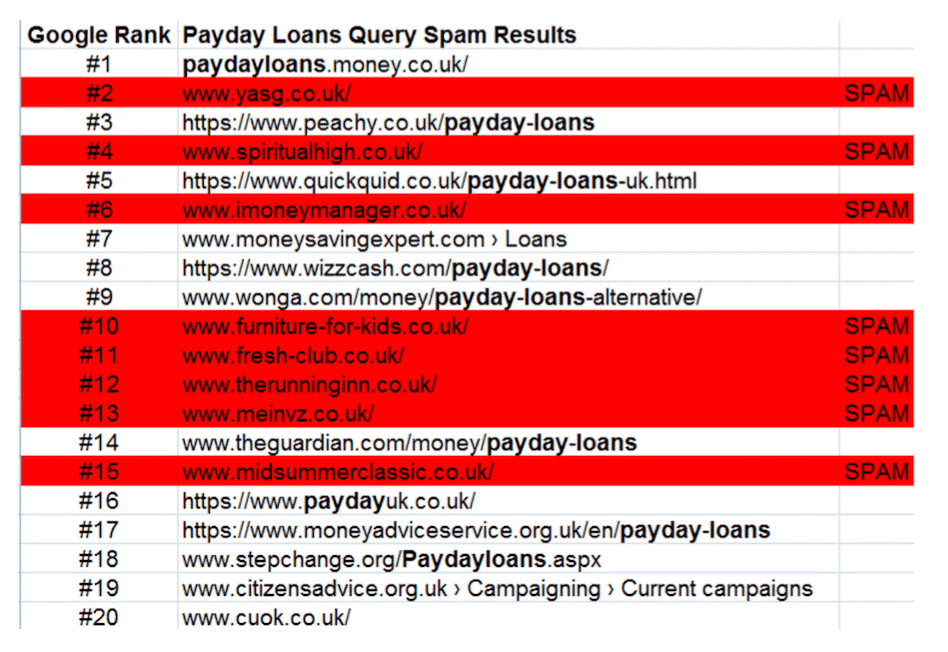
For several years, the search term ‘payday loans’ has regularly attracted more than 200,000 searches per month on Google.co.uk. Whether providing loans or generating leads, the payday loans industry has notoriously been big business and at its peak, was estimated to be worth around £2 billion per year.
Because of this, the top positions on Google’s SERPs for ‘payday loans’ [1]have been a hugely lucrative and sought-after search term; and subsequently was dominated by SEO professionals using massive manipulation to hack their way to the top of the search results.
Until 2013, page one for payday loans barely listed a real payday loan company. Instead, the listings were made up of ‘hacked sites’ including bicycle sales, women’s magazine and frankly, just random domain names that once clicked on redirected to a dubious data capture form.
Introducing the payday loans algorithm
With customer data at risk and a mountain of complaints from UK consumers (and similar results in the US), Google reacted and introduced an official “payday loans algorithm” in June 2013. For the search giant to acknowledge a particular search term – demanding its own algorithm and focusing on a micro-industry across the pond – it was certainly out of the ordinary and we are yet to see any other industry treated in the same regard.
The payday loan algorithm update was rolled out over a two-month period. The first payday loan update occurred in June 2013, followed by Payday 2.0 on 16 May 2014 and Payday 3.0 which was rolled out shortly thereafter in June 2014.
Whilst the first algorithm change was a general clean up, payday loans algorithm 2.0 focused on targeting spammy querie[2]


